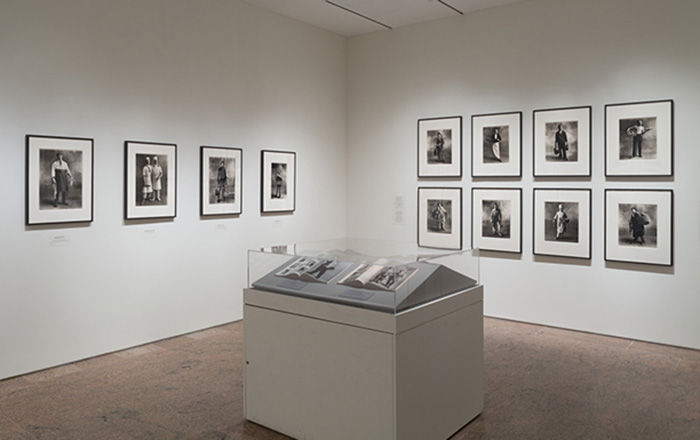Smoke and Condensation
Mac Adams American, born Wales
Not on view
A glinting glass, a lock of hair, a telltale tattoo—any one of the details in a Mac Adams photograph could serve as a clue. His diptych conjures a clear before and after, between which the artist engineers what he has termed a “narrative void.” How much time elapses in this interstitial space? Minutes, or maybe more; smoke clears, the tattoo fades, and something sinister seems afoot. Adams is as interested in what happens between frames as what appears in the photographs themselves. These and other pictures in his “Mystery” series are packed with evidence, but their cryptic scenarios resist explication, inviting viewers to play detective in an unsolved case.
Adams takes cues from cinema, citing Hitchcock as an influence, and recalling early filmgoing in his native Wales, where the “mixture of fact and fiction experienced in darkened halls, with a solitary light piercing the darkness, opened up worlds.” He moved to the United States to get an MFA, and soon joined an emerging sect of New York conceptualists practicing so-called Narrative Art. The group, heralded by Peter Schjeldahl in 1974 as a “perky, remarkably nice new avant-garde movement,” was often defined by its use of text. A notable outlier (with negligible perk), Adams avoided spelling out his intentions, instead allowing his photographs to speak for themselves. Pairing images in oblique sequence, he manufactures a taut, wordless screenplay, rife with suspense.
